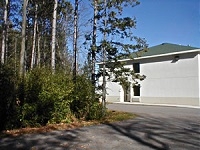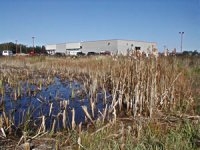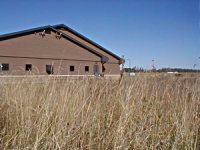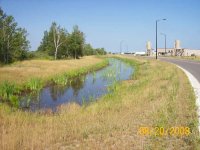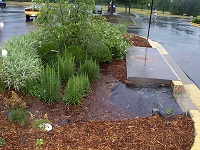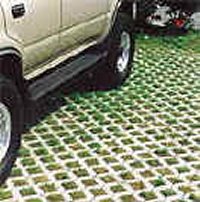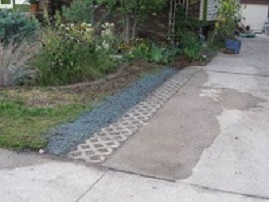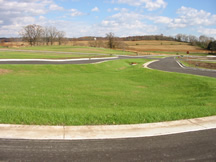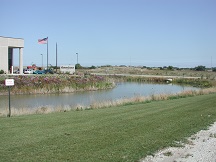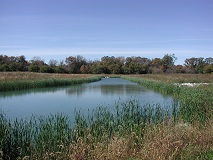Photo Gallery: Storm Water Best Management Practices
LEARN MORE ABOUT STORM WATER RUNOFF
Best Management Practices (BMPs) improve water quality, protect downstream water bodies, reduce flooding, and can be aesthetically pleasing. This photo gallery provides examples of BMPs for commercial, residential, and industrial sites.
Use Native Plants and Create Green Spaces for Storm Water Infiltration
You can save dollars earmarked for lawn maintenance by replacing large, high maintenance mowed areas with native vegetation. Native plants and soils will also have the greatest long term impact on protecting the watershed and any nearby water bodies (lakes, rivers and wetland areas) where storm water runoff ultimately travels. This up-front planning will save costs associated with storm sewer fees, lawn creation and maintenance costs, and disposal charges, to name a few.
The following three photos illustrate various ways to keep or establish vegetation while allowing access. The three examples are a woodland, a prairie and a wetland area near small businesses.
|
|
|
|
DNR Photos - Tom Blake and Mike Nordin
Construct Bioretention Areas to Infiltrate and Treat Storm Water
Bioretention captures storm water runoff for infiltration and uses plants to treat storm water runoff.
|
DNR Photo - Amy Martin |
DNR Photo |
DNR Photo |
Replace/Modify Parking Lots and Driveways with Porous Pavers to Increase Infiltration
Pavers are alternatives to using asphalt and concrete for parking lots, driveways, and walkways. Concrete lattice pavers reduce storm water runoff by allowing storm water infiltration on site. Porous Pavers come in several shapes and sizes and can be easy to install.
This homeowner has installed a rain garden to capture roof runoff and added concrete pavers to the driveway for added infiltration. Note grass restoration in progress under mulch.
|
DNR photo |
DNR Photo - Jim Bertolacini |
Manage Runoff Volume with Infiltration Swales and Basins
Storm water retrofitting includes collecting and treating runoff to save dollars, prevent flooding downstream and protect nearby waterways. The following practices, when used solely, or in combination, will hold back sediment while allowing runoff water to seep slowly back into the ground. Grassed swales function by slowing runoff as it comes off an impervious surface such as rooftops or parking areas. The grassed swale can remove sediments and other pollutants and provides some infiltration into the soil. A drawback, however, is that they can be ineffective at treating and absorbing runoff during a larger rain event.
Infiltration basins and trenches are used to hold runoff in place, thereby replenishing the groundwater, reducing flows to surface water, removing additional pollutants and minimizing flooding. To protect the infiltrative capability of infiltration basins or trenches, the heavier sediment in runoff must be removed in a sedimentation practice like a wet pond prior to the runoff reaching the infiltration practice.
|
DNR Photo |
DNR Photo |
DNR Photo - Pete Wood |
Wet Ponds
Wet ponds are the most efficient storm water management practice for settling sediment from large drainage areas. They can act as pretreatment practices for infiltration basins and trenches and can double as flood control devices. Constructed with an aquatic shelf around the perimeter, wet ponds can be aesthetically pleasing, provide habitat for aquatic life while discouraging residency by waterfowl such as geese. Sediment that accumulates in wet ponds must be removed every 10-30 years.
|
DNR Photo - Pete Wood |
Construct Wetlands to Store Storm Water and Remove Pollutants
Constructed wetlands are shallow pools with wetland plants that remove pollutants through sedimentation and biological uptake. Storm water wetlands can also provide educational and habitat benefits.
|
DNR Photo - Pete Wood |

